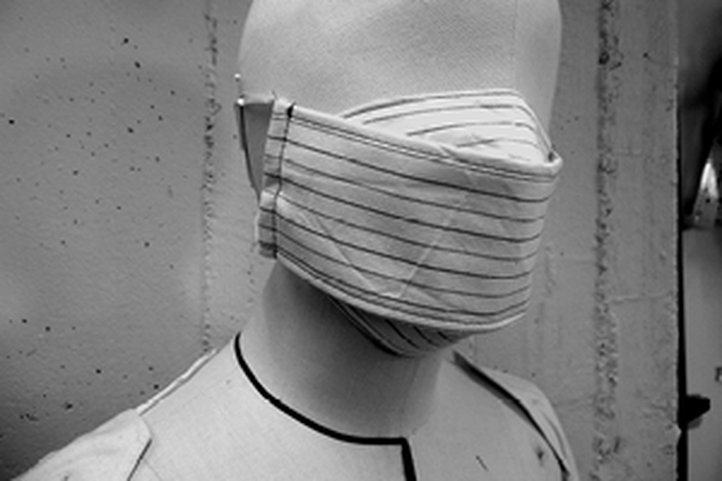Update 23 April 2020
Over the past few weeks, a total of eight fashion design students at the HfK Bremen have sewn face masks for the Bremen fire brigade. "The fire brigade organises civil protection and disaster control," says Nicola Essig, head of the HfK fashion workshop. "It distributes the masks to places where they are needed, such as the police or social welfare organisations.
Essig and the helpers shared the tasks. The manager cut the fabric and fleece for the eight seamstresses and carried out the final inspection. The project also moved a lot of material. Around 75 metres of fabric and 100 metres of fleece are needed for 1,900 masks. Each person makes around five masks per hour.
1,500 masks, packed in four cardboard boxes, have already been collected by the fire brigade. The remaining masks will be handed over today. The students have produced a total of 4,000 masks, while the workshop managers have made a further 140 masks.
More masks are to be produced in the future, but initially only for use at the university itself. The budding fashion designers not only help others, but also themselves. They work on the basis of work contracts and thus have a source of income in these financially difficult times for many students.
9 April 2020
Mouth and nose masks are in short supply worldwide during the corona crisis - even in Bremen. But fashion design students* at the Bremen University of the Arts are currently tackling the issue: they are currently sitting at their sewing machines to produce up to 5,000 masks. As soon as they are finished they will be handed over to the Bremen professional fire brigade. "The fire brigade organises civil defence and disaster control", says the head of the HfK fashion workshop Nicola Essig. "They distribute the masks to places where they are needed, for example police or social welfare offices."
The mouth and nose mask is sustainable and consists of fabric and two layers of water-repellent fleece. "Everything is boil-proof," says Nicola Essig. The model has already passed the practical test. "The masks were tested by a mobile nursing service in Aurich," reports the lecturer. "They are very popular." Because rubber band is hardly available at the moment, the masks have fabric bands.
Essig and the helpers* share the tasks. The manager cuts the fabric and the fleece for the seven seamstresses and takes over the final inspection. The project moves a lot of material. For 1,900 masks, about 75 meters of fabric and 100 meters of fleece are necessary. Each person can produce about five masks per hour.
The prospective fashion designers not only help others, but also themselves. They work on the basis of work contracts and thus have a source of income in these financially difficult times for many students.
